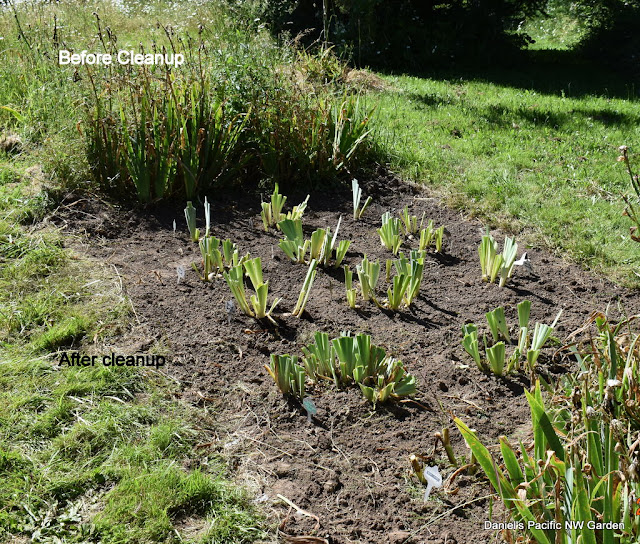 |
| Ning's wildflower meadow. 5.25.14 |
 |
| Redmond Linden growth. 5.25.14 |
Puttering.
The first of Ning's wildflower meadow gardens is blooming with the first of its flowers. Pretty nice. There are a few bees - bumblebees and honeybees - harvesting nectar.
Redmond American Linden is growing nicely. I gave it some organic nitrogen this winter. I tried not to overdo it. There are flower buds on this, but not on the
Greenspire European Lindens, even though they are much bigger. The Redmond Linden has much bigger leaves, compared to the Greenspire Lindens. The flowers, for honey, were why I planted these.
Deer have not eaten any of the lindens. I have protected the bark from rabbits and gnawing rodents, using hardware cloth.
 |
| Redmond Linden. 5.25.14 |
.JPG) |
| Sourwood new growth. 5.25.14 |
Sourwood (
Oxydendrum arboreum) has taken off and growing. I wondered. The lower branches died during the hard freeze. During Spring rainy season, the new growth developed what looks like the fireblight that appears on pears. Now it's coming out of it and growing nicely. Sourwood is not native here, and there aren't a lot of them. So it's an experiment.
Tamara rose, grown from cutting. Moved to Battleground in 2012. Eaten by deer, and now surrounded by some sort of yellow flowering weed. It's actually doing well.
Most of the top-killed fig trees are coming up from the roots. I'm debating whether to give them some organic nitrogen. I don't want them to grow to vigorously, and be winter killed next year. I would like some decent growth.
I planted 2 new palms. The first,
Trachycarpus fortunei (Windmill palm), is a species I've had in my front yard in Vancouver for 15 years. It's pretty hardy. The label states hardy to 20 to 10F. Last winter the tree in my yard survived 8F. The second,
Chamaerops humilis (European fan palm), is labeled as hardy to 6 degrees. "Extremely slow grower". This palm is more a bush, than a tree, with clusters of palms. I read deer and rabbits don't eat them. Battleground is a bit less gentle climate, compared to Vancouver. If they don't survive, that's OK. If they do survive, that's even better. They will also provide something green to look at when the grass turns brown, and in the winter.
 |
| Sourwood new growth and some leaf damage. 5.25.14 |
I planted the
Zucchini and
Yellow Summer Squash, and
Scallop Squash, seedlings that I grew from seeds a couple of weeks ago. There are some additional seedlings still to plant.
I mulched around the new
apple trees, using newspaper and food package cardboard as the bottom layer - to kill grass - then covering with grass mowings deep enough that you can't see the bottom layer. I cut fencing to complete the deer cages, but it started raining so I did not fasten in place.
 |
| Smith fig regenerating from roots. 5.25.15 |
 |
| Trachycarpus fortunei planted 5.25.14 |
 |
| Chamaerops humilis planted 5.25.14 |
 |
| Tamara rose amid irises and weeds |
 |
| Sunroom nearing completion. 5.25.14 |








































.JPG)





